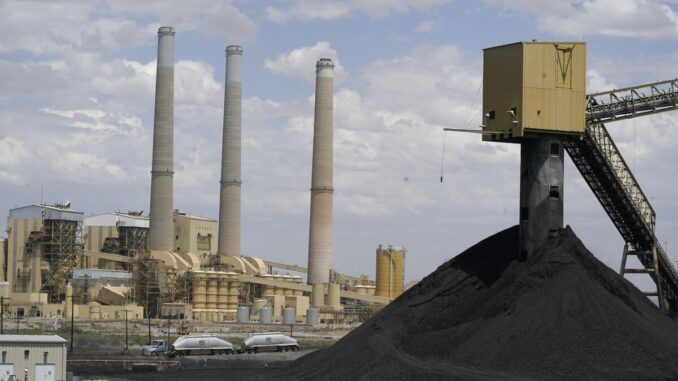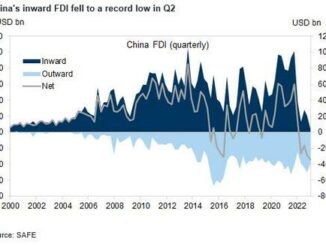
There’s little doubt that avoiding the most dire effects of climate change requires phasing out power stations that burn coal, the biggest source of carbon dioxide emissions. Yet the opposite is happening. Even as temperatures on Earth smash new records and scientists warn the climate is reaching dangerous tipping points, the amount of coal being consumed keeps on growing. The basic problem is simple: Whenever the security of electricity supply is in doubt, the imperative to contain global warming slips down the agenda.
1. How reliant is the world on coal?
Coal, the dirtiest fossil fuel, is the biggest source of electricity, accounting for 35% of the world’s generation in 2023, according to Ember, a climate think tank. Natural gas was second with more than 22%, hydroelectric supplied 14% and nuclear was 9%. Still, that’s a sign of progress. From 2006 through 2014, coal was the source of at least 40% of global electricity generation, according to the International Energy Agency, a Paris-based organization of developed nations that aims to assure a stable worldwide market.

2. Why is coal so hard to quit?
Developing countries value coal as a cheap and convenient source of power they can use to modernize their economies — just as Western nations did before them. In China and India, the two biggest consumers, coal use has grown almost continuously for decades: Combined, they were responsible for two-thirds of the world’s coal usage in 2023, compared with 35% in 2000. That has largely offset progress by industrialized countries, especially the US and European nations, to ramp up renewables. And coal remains resilient in many Western countries, where expectations for continued growth in power demand — due largely to the electrification of personal transportation and home heating and the rapid expansion of data centers — are delaying plans to retire coal-fired power plants. Paradoxically, the drive toward net-zero is helping to underpin coal demand in the near-term as a lot of the manufacturing of electric vehicles, solar panels and other climate-friendly technology is happening in coal-hungry China.
3. Why has coal usage by the US and Europe remained strong?
Coal has had a wild ride since the Covid-19 pandemic, when factories and offices shut down, reducing demand for electricity. Producers of natural gas curbed output in response. But when restrictions eased in 2021 and demand for power surged, gas production took a while to restart and utilities turned to ever-available coal to keep the lights on. Then came Russia’s full-scale invasion of Ukraine in 2022, which spurred European sanctions. Russia began choking off gas supplies to Europe, which boosted coal usage to fill the gap. And starting in late 2023, utilities were taken by surprise by the rapid growth in power consumption from data centers, especially energy-hungry applications like artificial intelligence. That’s expected to prop up demand for coal.
4. Are China and India cutting back?
The two most populous nations face increasing pressure to keep power flowing across the grid amid surging electricity use. China is rapidly installing wind and solar, and the nation may soon reach peak coal consumption, but the fuel will still be used to balance out intermittent generation from renewables. The country uses more than half of the world’s coal and in 2023 accounted for 95% of the world’s new construction of coal-fired power plants, but President Xi Jinping has pledged that usage will peak by 2026. India is also adding to its fleet of coal power plants, with plans to add more capacity in fiscal 2025 than it has in almost a decade. Coal supplies about three-fourths of the country’s electricity and the government expects it to remain the mainstay of the grid for at least another decade.
5. How about other countries?
Envoys from almost 200 nations reached a historic agreement in late 2023 at the annual United Nations climate conference in Dubai to transition away from fossil fuels, including coal. This was the first time negotiators had agreed to tackle the root cause of climate change, though critics say the deal has multiple loopholes that may slow the shift.
6. What’s the outlook?
Researchers confirmed that 2023 was the hottest year by far in planetary history. But the IEA sees demand for coal remaining steady through 2025, after climbing 2.6% to reach another record high in 2023. World leaders will need to step up international efforts to curb coal consumption to reach the widely cited goal of “net zero” global emissions by 2050. Net zero means fossil fuel emissions are reduced to a point where other initiatives, such as planting trees or using technology to pull carbon dioxide out of the air, offset what remains. To achieve that by 2050, global coal use would need to fall by more than 90%, and what’s left would need to be handled by plants capable of capturing and storing emissions, the IEA says.
(Through his philanthropy, Michael R. Bloomberg, founder and majority owner of Bloomberg News parent Bloomberg LP, supports efforts around the world aimed at replacing coal power with cleaner alternatives.)
The Reference Shelf
- In the view of Bloomberg Opinion columnist Javier Blas, the dirtiest fossil fuel still powers the world, and talk of its demise is greatly exaggerated.
- Related QuickTakes on the energy transition and the effects of global warming on extreme weather.
- The International Energy Agency’s periodic update of global coal markets.
- The US Energy Information Administration’s interactive table of coal use.
- The World Coal Association describes how prehistoric plants become coal.
- Climate Action Tracker’s thermometer measuring global warming.





